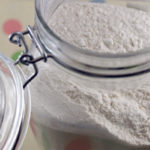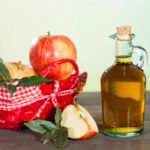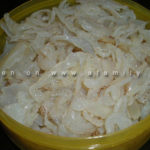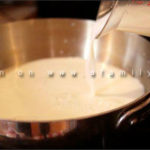Contrary to popular belief, using boiling water to pickle cabbage will not make it soggy and limp. Many women have tried the trend of pickling cabbage with boiling water and the results are surprising.
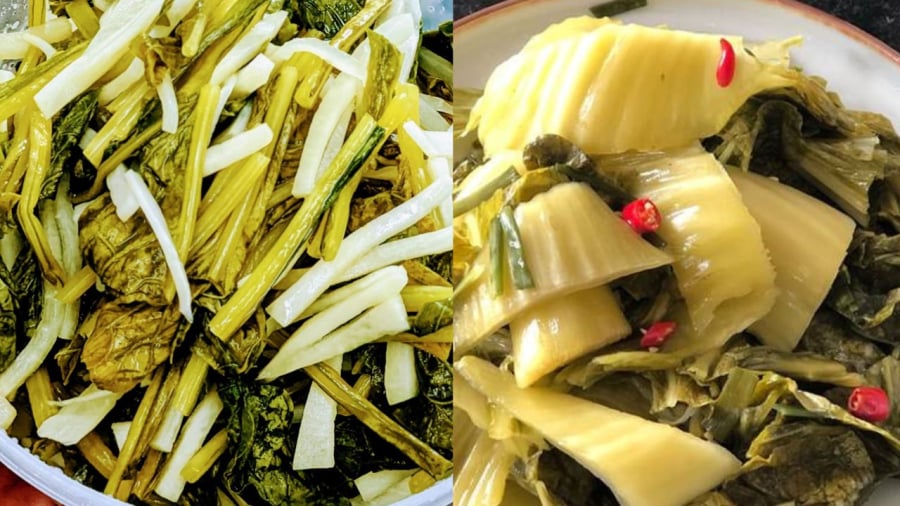
Ingredients
1 kg of cabbage, choose the firm and non-youthful type. Avoid cabbage that is too watery as it may turn soft and lose its crunchiness and yellow color when pickled.
A handful of green onions
4-5 dried onions, spicy chili (optional, depending on your preference for spiciness)
Seasonings: Sea salt or table salt, sugar (you can choose whether to use sugar or not depending on how quickly you want the pickles to be sour)
Clean glass jar or ceramic container, sterilized with boiling water and dried.
Water from rinsing rice (if available)
Step 1: Preparation
Separate the cabbage leaves, remove any wilted or insect-damaged parts. Place the cabbage leaves in the sun to wilt or leave them under a fan to reduce moisture in the cabbage. Wilting the cabbage leaves will make them crispier and prevent them from becoming mushy.
Remove any withered parts and root hairs from the green onions, wash them clean, and cut off the roots (the onion roots can be added to the pickles as they are very fragrant).

Step 2: Pickling
When the cabbage leaves have wilted, rinse them under running water to clean them, avoiding crushing the leaves. Then cut them into 3-5cm pieces, or leave them whole depending on your family’s preference. If you want to eat the pickles immediately without having to cut them, you should cut them while the cabbage is still fresh.
After cutting, rinse them again to remove the sliminess and prevent the cabbage from sticking together and becoming slimy. If you are careful, you can soak and rinse them with salt water to cool them down, which will help reduce the risk of the pickles becoming mushy.
Cut the green onions into small pieces, slice the chili, and thinly slice the onions.
Prepare the pickling solution: Bring a pot of water to a boil with salt and sugar. For 1 liter of water, use about 3 tablespoons of salt. Stir until the salt and sugar dissolve.
Combine the cabbage, green onions, and chili in a bowl, jar, or container. Pour the boiling pickling solution into the container, then use a spoon to stir the cabbage in the liquid.
Place a weight on top of the pickles to ensure they are fully submerged in the liquid. Store the pickles in a cool place. In winter, you can pour boiling water directly into the container, and in hot summer, you can let the water cool to around 80 degrees Celsius before pouring it in.
After 2-3 days, the pickled cabbage will be evenly fermented, golden, and crispy, ready to eat. Pickling cabbage with boiling water may come as a surprise to many people, but it is a secret that many people have been using. Cabbage of the sen variety and arrowroot leaves are especially suitable for pickling with boiling water. The heat from the boiling water helps speed up the fermentation process, especially during the cold winter days in the northern regions.
After pickling, cabbage can be served with fish sauce, boiled meat, or stir-fried meat. It can also be stir-fried with pork liver, stir-fried with meat, or cooked with fish in a soup.
Tips to prevent mushy pickles
Avoid storing pickles in high-temperature areas such as near the stove or in direct sunlight.
If there are leftovers, avoid pouring the excess pickles into the container as it may cause them to turn mushy.
When taking pickles, use a clean spoon to avoid mixing other foods into the container.
For pickling, choose firm, non-youthful cabbage that is around 1 kg. Avoid cabbage that is too watery, as it may turn soft and lose its crunch and color during the pickling process.
In addition to the cabbage, you will need green onions, dried spicy chilies (optional), sea or table salt, sugar, a clean glass jar or ceramic container, and water from rinsing rice (if available).
Separate the cabbage leaves and remove any wilted or insect-damaged parts. Expose the leaves to sunlight or place them under a fan to reduce moisture content. This step will help ensure crispier pickles and prevent mushiness.
Once the cabbage leaves have wilted, rinse them under running water without crushing the leaves. Cut the leaves into smaller pieces or leave them whole, depending on your preference. Prepare a pickling solution by boiling water with salt and sugar (about 3 tablespoons of salt per liter of water). Combine the cabbage, green onions, and chilies in a container, and pour the boiling pickling solution over them. Stir the mixture and weigh down the pickles to ensure they are fully submerged. Store the pickles in a cool place.
After 2-3 days, the pickled cabbage will be evenly fermented, golden, and crispy. It will be ready to eat and can be served with fish sauce, boiled or stir-fried meat, or cooked in a soup.
- Avoid storing pickles in high-temperature areas, such as near a stove or in direct sunlight.
- Don’t pour excess pickles into the container if there are leftovers.
- Always use a clean spoon when taking pickles from the container.


























